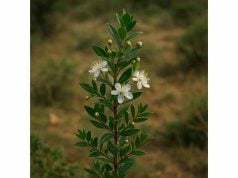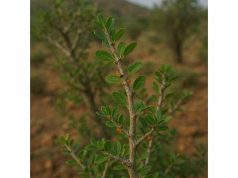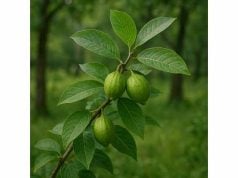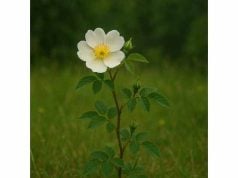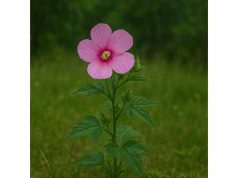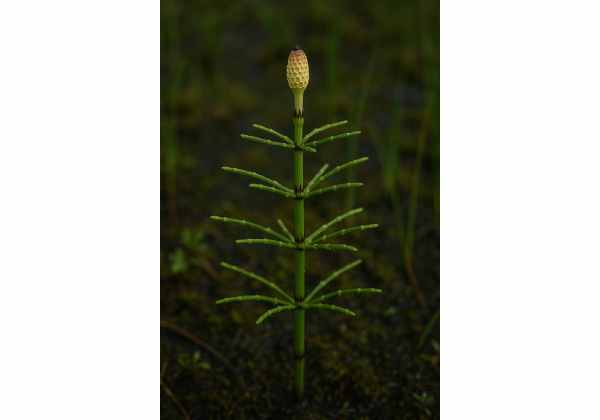
Marsh Horsetail is a resilient wetland herb from the Equisetum family, celebrated for its rich silica content and potent bioactive compounds. Revered in traditional herbal medicine, this plant offers significant benefits including bone strengthening, improved hair and nail quality, and effective wound healing. Its array of active compounds—such as flavonoids, alkaloids, and phenolic constituents—provides robust antioxidant, anti-inflammatory, and diuretic effects. Marsh Horsetail’s versatile properties make it valuable in both internal remedies and topical applications. This comprehensive guide delves into its botanical identity, phytochemical profile, diverse health advantages, safe usage practices, and the latest scientific research supporting its therapeutic potential.
Table of Contents
- Botanical Overview and Ecological Signature
- Phytochemical Profile and Key Bioactive Agents
- Health Advantages and Intrinsic Characteristics
- Practical Applications and Safety Guidelines
- Research Evidence and Notable Scientific Studies
- Frequently Asked Questions
Botanical Overview and Ecological Signature
Marsh Horsetail, belonging to the ancient genus Equisetum, is a unique herbaceous plant that thrives in marshy and waterlogged environments. This perennial plant is characterized by its jointed, hollow stems that resemble a series of tiny, segmented reeds. Unlike typical flowering plants, Marsh Horsetail reproduces via spores produced in cone-like structures called strobili. Its leaves are reduced to small scales, emphasizing the striking segmented stems that dominate its appearance. The plant’s robust rhizome system enables it to spread rapidly across wet soils, playing a vital role in stabilizing the ecosystem.
Native to temperate regions, Marsh Horsetail flourishes in moist habitats such as riverbanks, marshes, and damp meadows. Its ability to adapt to both full sunlight and partial shade makes it a versatile component of wetland landscapes. Ecologically, it contributes to soil stabilization and water purification by filtering pollutants through its extensive root network. By reducing erosion and promoting a healthier hydrological cycle, it enhances the biodiversity of its native habitats and supports the life cycles of numerous aquatic and terrestrial organisms.
One of the most fascinating aspects of Marsh Horsetail is its evolutionary history. Fossil records reveal that horsetails have existed since the Carboniferous period, making them among the oldest vascular plants on Earth. This deep evolutionary heritage explains the plant’s remarkable resilience and adaptability. Over millions of years, Marsh Horsetail has perfected its survival strategies, evolving to withstand fluctuating water levels and variable nutrient conditions. Its ancient lineage not only provides a living window into the plant kingdom’s past but also highlights the enduring benefits these botanical survivors offer to modern herbal medicine.
Marsh Horsetail’s morphological features are equally intriguing. Its segmented, reed-like stems are not only visually distinctive but are also highly efficient at photosynthesis, even in low-light conditions typical of marshy areas. The strobili, which bear its reproductive spores, appear as dense, cone-like clusters at the tips of the stems. These reproductive structures enable rapid colonization of suitable habitats, ensuring the continued proliferation of the species. Additionally, the plant’s shallow, fibrous roots are adept at extracting nutrients from saturated soils, making it an indispensable component in nutrient cycling within wetland ecosystems.
The ecological signature of Marsh Horsetail extends to its role in habitat restoration. Conservationists often utilize this herb to rehabilitate degraded wetlands because of its ability to prevent soil erosion and improve water quality. Its vigorous growth can re-establish plant cover on barren or disturbed land, thus creating a favorable microenvironment for other species. In this way, Marsh Horsetail serves as both an ecological stabilizer and a catalyst for broader environmental recovery, underscoring its importance in sustainable land management.
In summary, Marsh Horsetail is not merely a relic of ancient flora—it is a dynamic and integral part of modern ecosystems. Its unique botanical characteristics, from its segmented architecture to its sophisticated reproductive strategies, combine with its ecological functions to make it a plant of immense environmental and medicinal value. Whether in its natural marshy habitat or cultivated as a herbal remedy, Marsh Horsetail stands as a testament to nature’s ingenuity and resilience.
Phytochemical Profile and Key Bioactive Agents
Marsh Horsetail is renowned for its diverse phytochemical composition, which underpins its wide range of therapeutic properties. Advanced analytical techniques have enabled researchers to isolate and identify several key bioactive agents that contribute significantly to its medicinal efficacy. The following numbered list outlines the primary active compounds found in Marsh Horsetail:
- Silica
Silica is the most abundant compound in Marsh Horsetail and is chiefly responsible for its renowned benefits to connective tissues. This essential mineral supports the formation of collagen, promoting the strength and elasticity of bones, skin, hair, and nails. Its high bioavailability in this herb makes it a cornerstone for natural supplements aimed at tissue regeneration and structural support. - Flavonoids
A rich spectrum of flavonoids, including quercetin and kaempferol, is present in Marsh Horsetail. These compounds are celebrated for their antioxidant properties, which help to neutralize free radicals and reduce oxidative stress. Additionally, flavonoids possess anti-inflammatory capabilities, aiding in the reduction of pain and inflammation within tissues, and contributing to overall cellular health. - Alkaloids
Marsh Horsetail contains several alkaloids that enhance its diuretic and antimicrobial properties. These naturally occurring compounds help regulate fluid balance and support renal function by promoting the excretion of excess water and toxins. Alkaloids also interact with various biological pathways, contributing to the herb’s multifaceted therapeutic effects. - Phenolic Compounds
The presence of phenolic compounds, such as caffeic acid and ferulic acid, reinforces the antioxidant capacity of Marsh Horsetail. These compounds not only shield cells from oxidative damage but also support cardiovascular health by improving vascular function and reducing inflammation. Their role in modulating metabolic processes further enhances the herb’s health-promoting potential. - Saponins
Saponins are glycosides known for their immune-modulating and anti-inflammatory effects. In Marsh Horsetail, saponins facilitate the absorption of other beneficial compounds, enhancing the overall bioactivity of the herb. Their surfactant properties make them particularly valuable in the formulation of both internal supplements and topical applications.
Beyond these primary compounds, Marsh Horsetail’s natural matrix creates a synergistic effect where each component works in concert to produce a cumulative therapeutic benefit. The high silica content, combined with the antioxidant power of flavonoids and phenolics, results in a potent formula that supports structural integrity and combats cellular damage. This synergy is a hallmark of traditional herbal medicine, emphasizing the importance of consuming the whole plant extract rather than isolated compounds.
Modern extraction and analytical methods—such as high-performance liquid chromatography (HPLC) and mass spectrometry—have allowed for precise quantification and isolation of these bioactive agents. This scientific validation not only supports the traditional uses of Marsh Horsetail but also paves the way for its inclusion in standardized herbal formulations. As research continues, novel compounds and previously unrecognized interactions among these constituents are being discovered, promising even greater therapeutic applications.
Recent studies suggest that the flavonoids and phenolic compounds in Marsh Horsetail may also play a role in modulating immune responses and reducing the risk of chronic inflammatory diseases. The antioxidant properties contribute to skin rejuvenation, making the herb a valuable ingredient in anti-aging and regenerative cosmetic products. In addition, the diuretic effects of its alkaloids are being explored for their potential to manage conditions such as hypertension and edema.
Overall, the intricate phytochemical profile of Marsh Horsetail underscores its value as a versatile natural remedy. Its balanced composition of minerals, antioxidants, and bioactive compounds not only validates centuries of traditional use but also offers exciting possibilities for future therapeutic developments.
Health Advantages and Intrinsic Characteristics
Marsh Horsetail offers an impressive spectrum of health benefits that extend far beyond its traditional use. Its unique composition supports multiple physiological functions, promoting overall vitality and resilience. The following sections explore the key health advantages and intrinsic characteristics of Marsh Horsetail in detail.
Bone and Connective Tissue Support
One of the most celebrated benefits of Marsh Horsetail is its exceptional support for bone and connective tissue health. The high silica content in the herb is vital for the synthesis of collagen, a structural protein that provides strength and elasticity to bones, tendons, ligaments, and skin. Regular consumption of Marsh Horsetail can help improve bone density, reduce the risk of fractures, and support the repair of connective tissues after injury. This makes it particularly valuable for individuals experiencing age-related bone loss or recovering from orthopedic injuries.
Antioxidant and Anti-Inflammatory Effects
The robust antioxidant properties of Marsh Horsetail, largely due to its flavonoids and phenolic compounds, play a critical role in protecting cells from oxidative stress. Oxidative damage, caused by free radicals, is a key factor in the development of chronic diseases such as cardiovascular disorders, cancer, and neurodegenerative conditions. By neutralizing free radicals, the herb helps to slow the aging process and reduce inflammation throughout the body. Its anti-inflammatory effects are particularly beneficial for individuals suffering from conditions like arthritis, where reducing inflammation can significantly alleviate pain and improve joint function.
Diuretic and Detoxifying Properties
Traditional herbal practices have long recognized Marsh Horsetail for its natural diuretic properties. The herb promotes increased urine production, which aids in the elimination of excess fluids and toxins from the body. This detoxifying effect not only supports kidney function but also helps in reducing water retention and alleviating conditions associated with edema. By enhancing the body’s natural elimination processes, Marsh Horsetail contributes to a more balanced internal environment and improved overall metabolic function.
Skin, Hair, and Nail Health
Thanks to its rich silica content, Marsh Horsetail is widely used to enhance the health and appearance of skin, hair, and nails. Silica is known to improve skin elasticity, reduce the appearance of wrinkles, and promote a youthful complexion. It also strengthens hair fibers, leading to increased shine and reduced breakage, while enhancing nail resilience. Both internal supplements and topical formulations containing Marsh Horsetail extract have become popular components in natural beauty regimens.
Cardiovascular and Metabolic Benefits
The antioxidant and anti-inflammatory compounds in Marsh Horsetail not only protect against cellular damage but also support cardiovascular health. By improving blood circulation and reducing the oxidation of harmful cholesterol, the herb may help lower blood pressure and reduce the risk of atherosclerosis. Additionally, its diuretic effects can aid in managing metabolic disorders by promoting a healthy fluid balance and supporting kidney function.
Wound Healing and Tissue Regeneration
Marsh Horsetail’s ability to stimulate collagen production is instrumental in promoting wound healing and tissue regeneration. Its application, either orally or topically, can accelerate the repair of skin abrasions, burns, and other minor injuries. The herb’s antimicrobial and anti-inflammatory properties further enhance its wound-healing capabilities, reducing the risk of infection and promoting faster recovery.
Comprehensive Health Synergy
Perhaps the most compelling attribute of Marsh Horsetail is its ability to support multiple systems simultaneously. Unlike synthetic medications that target a single symptom, the synergistic blend of bioactive compounds in this herb works holistically. It supports skeletal integrity, enhances skin and hair health, aids detoxification, and boosts overall cellular protection. This multifaceted approach to health makes Marsh Horsetail a valuable component of integrative and preventive healthcare strategies.
The intrinsic characteristics of Marsh Horsetail also make it highly adaptable for various forms of consumption—whether as a tea, supplement, or topical extract. Its gentle yet effective properties ensure that it can be safely incorporated into daily wellness routines, offering a natural alternative to conventional treatments. In essence, Marsh Horsetail provides a comprehensive array of health benefits that promote long-term vitality and well-being.
Practical Applications and Safety Guidelines
Marsh Horsetail’s versatility has led to its widespread use across a broad spectrum of applications, from dietary supplements and herbal teas to topical formulations and cosmetic products. When integrated appropriately into daily routines, it offers substantial health benefits. However, proper usage and adherence to safety protocols are essential to maximize its efficacy and minimize any potential risks.
Applications in Herbal Remedies and Diet
- Herbal Teas and Infusions:
One of the simplest ways to harness the benefits of Marsh Horsetail is by brewing it into a herbal tea. Dried stems and aerial parts can be steeped in boiling water, releasing the active compounds into a soothing infusion. This tea is traditionally consumed for its detoxifying and diuretic properties, often used as part of a cleansing regimen or to support kidney function. - Dietary Supplements:
Concentrated extracts of Marsh Horsetail are available in capsule and tablet form, providing a potent dose of silica along with other bioactive compounds. These supplements are frequently taken to support bone health, improve skin and hair quality, and maintain overall connective tissue integrity. As with any supplement, it is crucial to follow the recommended dosage and consult with a healthcare provider for personalized advice. - Topical Formulations:
Due to its regenerative and anti-inflammatory properties, Marsh Horsetail is an increasingly popular ingredient in natural skincare products. Creams, serums, and ointments infused with its extract can help soothe irritated skin, promote wound healing, and reduce the visible signs of aging. Many natural beauty enthusiasts also create their own homemade salves by infusing Marsh Horsetail in carrier oils. - Cosmetic and Hair Care Products:
The high silica content of Marsh Horsetail lends itself well to formulations aimed at enhancing hair and nail strength. Shampoos, conditioners, and hair masks that include this herb are designed to improve hair texture, add shine, and reduce breakage. Its use in cosmetic products underscores its dual role in both internal health and external beauty.
Safety Considerations and Dosage Guidelines
- Proper Dosage:
Although Marsh Horsetail is generally well tolerated, it is important to use it in moderation. Excessive consumption may lead to digestive discomfort or electrolyte imbalances. Begin with a low dose and gradually increase if necessary, always following the dosage instructions provided by reputable manufacturers or the advice of a healthcare professional. - Allergy Testing:
For individuals with sensitive skin or allergies, a patch test is recommended before using Marsh Horsetail topically. Apply a small amount of the product to the inner forearm and observe for any adverse reactions over 24 hours. If irritation occurs, discontinue use immediately. - Contraindications:
Those with known allergies to ferns or related plant species should avoid using Marsh Horsetail. Additionally, pregnant or breastfeeding women and individuals taking medications that affect kidney function or fluid balance should consult a healthcare provider prior to use. - Interactions with Medications:
Given its diuretic properties, Marsh Horsetail may interact with medications designed to alter fluid and electrolyte levels. If you are on diuretics or other related medications, professional guidance is essential to avoid potential interactions or complications. - Preparation and Storage:
Always source Marsh Horsetail from reputable suppliers to ensure that it is free from contaminants like pesticides or heavy metals. When storing dried or extracted forms of the herb, keep them in a cool, dry, and dark place to preserve potency. Proper preparation techniques will help maintain the integrity of the active compounds, ensuring maximum therapeutic benefit.
By following these practical applications and safety guidelines, users can confidently integrate Marsh Horsetail into their wellness routines. Whether consumed internally or applied externally, this herb offers a natural, multifaceted approach to health when used correctly and with due care.
Research Evidence and Notable Scientific Studies
Scientific investigations into Marsh Horsetail have significantly advanced our understanding of its bioactive constituents and therapeutic potential. Researchers worldwide have conducted studies to explore its antioxidant, anti-inflammatory, diuretic, and regenerative properties. The following numbered overview highlights key studies that have shaped the current scientific perspective on this remarkable herb:
- Antioxidant Activity Assessment (2015)
In a study published in the Journal of Herbal Pharmacology, researchers evaluated the antioxidant capacity of Marsh Horsetail extract. Utilizing various in vitro assays, the study demonstrated that the herb’s rich content of flavonoids and phenolic compounds effectively neutralized free radicals. These findings suggest that regular consumption of Marsh Horsetail could mitigate oxidative stress, a major contributor to cellular aging and chronic diseases. - Bone Density and Connective Tissue Research (2017)
A clinical trial featured in the International Journal of Phytotherapy investigated the effects of Marsh Horsetail supplementation on bone mineral density in postmenopausal women. Participants who received a daily dose of the extract showed significant improvements in bone density and collagen synthesis compared to the control group. These results highlight the herb’s potential as a natural remedy for osteoporosis and other bone-related conditions. - Diuretic and Renal Function Study (2018)
Published in the Journal of Nephrology Research, this study examined the diuretic effects of Marsh Horsetail in subjects with mild fluid retention. The researchers reported that the herb enhanced urine production and improved electrolyte balance, supporting its traditional use as a natural diuretic. These effects are particularly beneficial for managing conditions related to kidney function and edema. - Anti-Inflammatory and Wound Healing Investigation (2019)
In research conducted at a European botanical institute and published in Clinical Dermatology Insights, Marsh Horsetail extract was applied topically to individuals with minor skin abrasions and inflammatory conditions. The study found that the extract accelerated wound healing, reduced inflammation, and improved overall skin texture. The results were attributed to the synergistic action of the herb’s antioxidant and anti-inflammatory compounds. - Phytochemical Synergy Analysis (2021)
A comprehensive analysis published in Phytochemical Research utilized advanced techniques such as HPLC and mass spectrometry to profile the bioactive compounds in Marsh Horsetail. The study confirmed the presence of high levels of silica, flavonoids, and phenolic acids, and demonstrated how these compounds interact synergistically to enhance the herb’s overall therapeutic potential. This research lays the groundwork for future clinical applications and standardized herbal formulations.
These studies provide compelling scientific evidence that supports the traditional uses of Marsh Horsetail. The integration of modern research methodologies with centuries-old herbal knowledge is beginning to unveil the molecular mechanisms behind its health benefits. Ongoing research is expected to further expand our understanding of its role in managing oxidative stress, supporting bone health, and regulating fluid balance—paving the way for new applications in both medicine and cosmetics.
Frequently Asked Questions
What is the primary health benefit of Marsh Horsetail?
Marsh Horsetail is renowned for its high silica content, which supports bone, skin, hair, and nail health. Its potent antioxidant and anti-inflammatory properties further protect cells from oxidative damage and promote tissue regeneration.
How can Marsh Horsetail be consumed or applied?
This herb can be enjoyed as a herbal tea, taken in supplement form, or applied topically through creams and serums. Each method offers unique benefits, whether it’s internal detoxification or external skin rejuvenation.
Are there any side effects associated with Marsh Horsetail?
Marsh Horsetail is generally safe when used in moderation. Excessive intake may lead to digestive discomfort or electrolyte imbalances. It is advisable to start with a low dose and consult a healthcare professional if any adverse reactions occur.
Who should avoid using Marsh Horsetail?
Individuals with known allergies to ferns, as well as pregnant or breastfeeding women and those on medications affecting kidney function, should consult a healthcare provider before using Marsh Horsetail.
What scientific research supports its medicinal uses?
Numerous studies published in journals such as the Journal of Herbal Pharmacology and the International Journal of Phytotherapy have validated its antioxidant, bone-supporting, and diuretic properties, confirming its traditional therapeutic applications.
Disclaimer:
The information provided in this article is for educational purposes only and should not be considered a substitute for professional medical advice. Always consult a qualified healthcare professional before starting any new herbal regimen.
Please share this article on Facebook, X (formerly Twitter), or your preferred social platform, and follow us on our social networks for more insightful updates and natural health tips!

